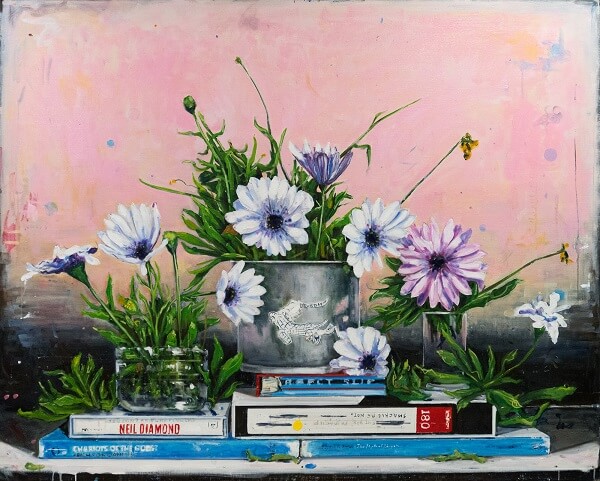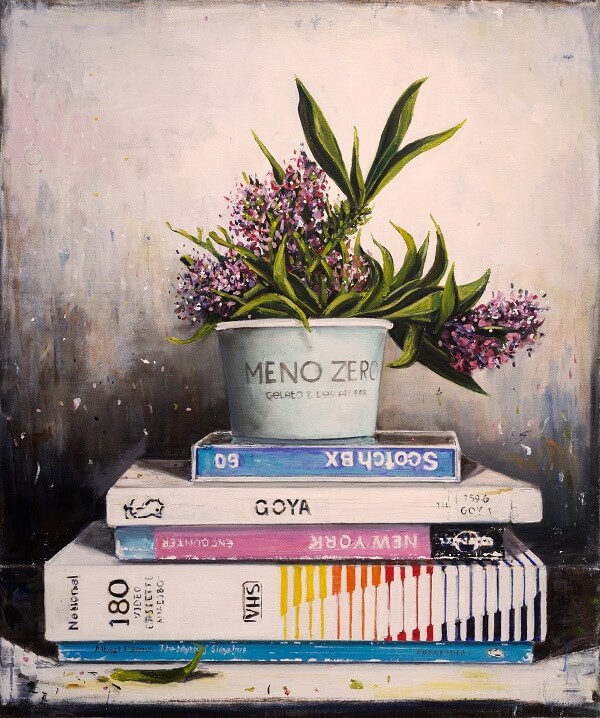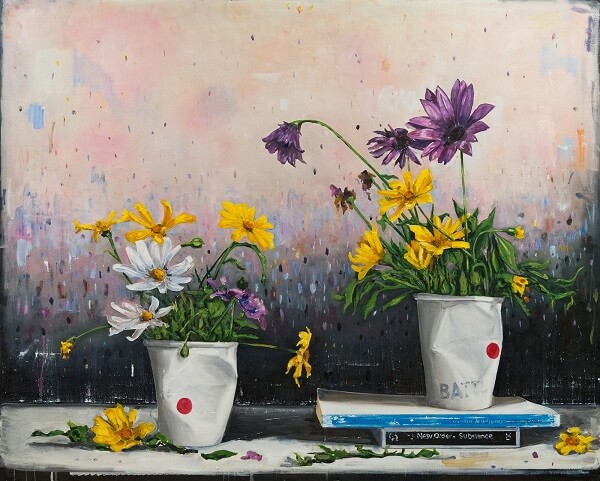Until 25 July, Arthouse Gallery in Sydney’s Rushcutters Bay is showcasing ‘Positive Aspects of Negative Thinking’, an exhibition of still life paintings by Fabrizio Biviano, which explore personal and collected objects as articles of memory and identity, and is a continuance of the artist’s self-reflective creative output.
The title of the show “is reflective of what I have, and what we have in the world, particularly at this time with so much upheaval and change going on, we have the tendency to focus on the negative, but from that comes a lot of positives,” says Biviano.

Drawing inspiration from the 16th and 17th century traditions of Vanitas still life painting, which involves the curation of objects brought together to symbolise the temporal nature of our existence, the futility of pleasure and the certainty of death, Biviano conveys these sentiments of mortality in a series of contemporary interpretations, which consider the artist’s own experiences of loss and the passing of time, and explore the juxtaposing nature of transience and permanence, absence and presence.

With a brighter than usual palette and a looser brushstroke, in this series, Biviano brings flowers and often daisies (via the euphemism ‘pushing daisies’) to the canvas to articulate impressions of hope and joy and the ephemeral nature of beauty and the cycle of life, composed in various arrangements with books, cassettes, VHS tapes, disposable coffee and gelato cups, and other objects that hold personal meaning and interest for the artist. Op-shopped souvenir pieces such as dolphin themed salt and pepper shakers, and a glass vessel from the Black Forest in Germany, among other trinkets feature in some of the works, and although these salvaged relics hold memories of someone else’s journey in a time passed, the personal and cultural references of the items in some way resonate with the artist’s reflections of self.
Another provocation for drawing meaning from this body of work is Albert Camus’ book The Myth of Sisyphus (1942), the spine of which features in each of the paintings. Camus puts forward a philosophical essay about what he deems “the absurd”, that is, the unavailing search for the meaning of life. “For Camus, Sisyphus represented the absurdity and meaninglessness of modern existence and the futility of toiling away at the same job day in day out,” notes the gallery.
“And yet, Biviano recognises repetition as a profound raison d’être; a conduit of catharsis, and of purpose. Just as Sisyphus found resolve in his toil, so too does Biviano’s own painterly pursuits enrich his reality. He explains, ‘if we realise we don’t have a rock to push, then what do we do?’”

Visit Arthouse Gallery’s website here. To hear Fabrizio Biviano’s artist talk click here and to view the exhibition online click here.